There’s a buzz and a flutter when the sun’s out now. Follow your ears and focus your eyes to find these on the sun sun, sunny side of the hedgerows. I had a great time along the concrete path between Park Farm and the Plumpton End road.
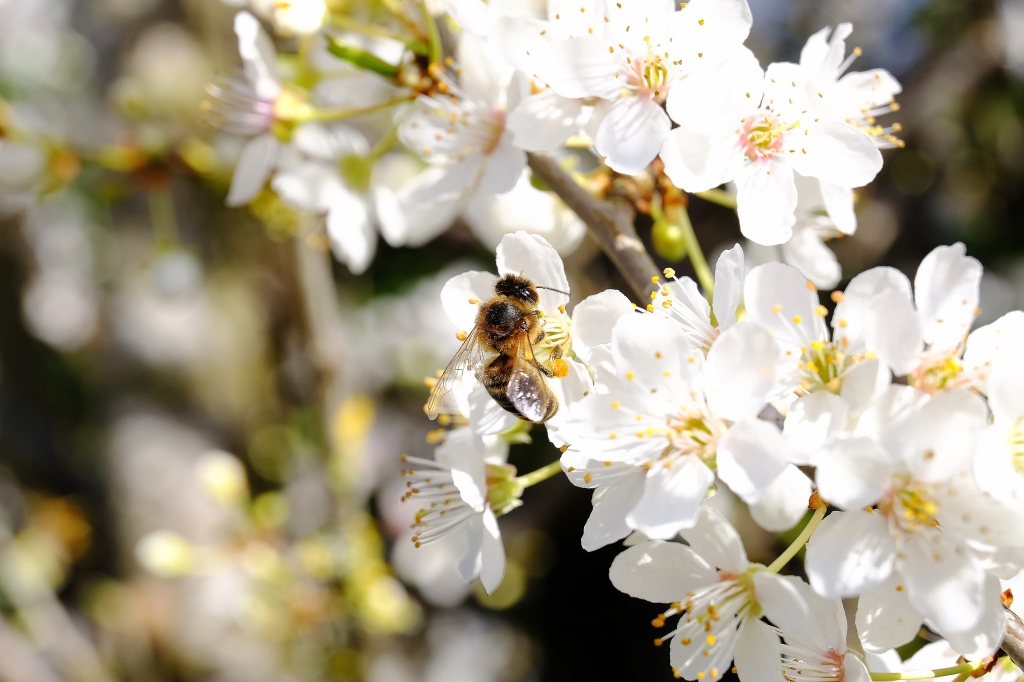
Photo credit: Sally Woodbridge
As usual Cherry Plum was the first blossom out this spring. It’s easily confused with blackthorn blossom as they both flower before the leaves come out, but Cherry Plum doesn’t have the spiky thorns. Honeybees and bumblebees are social bees living in colonies. However 90% of British bee species are solitary bees, with nests made by an individual female.
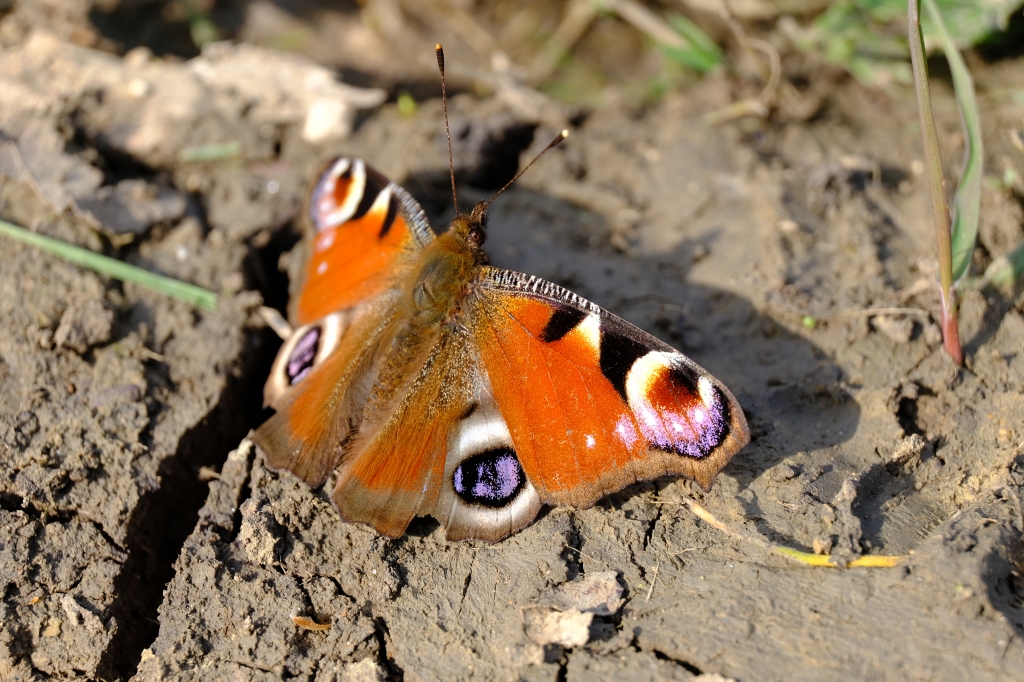
Photo credit: Sally Woodbridge
Peacock butterflies, with their peacock feather wing ‘eyes’, are coming out of hibernation now. This one may have emerged from it’s chrysalis early last August, fed through the summer then hibernated. With luck it will mate and lay eggs on the underside of nettles this spring, and may still be around in June.
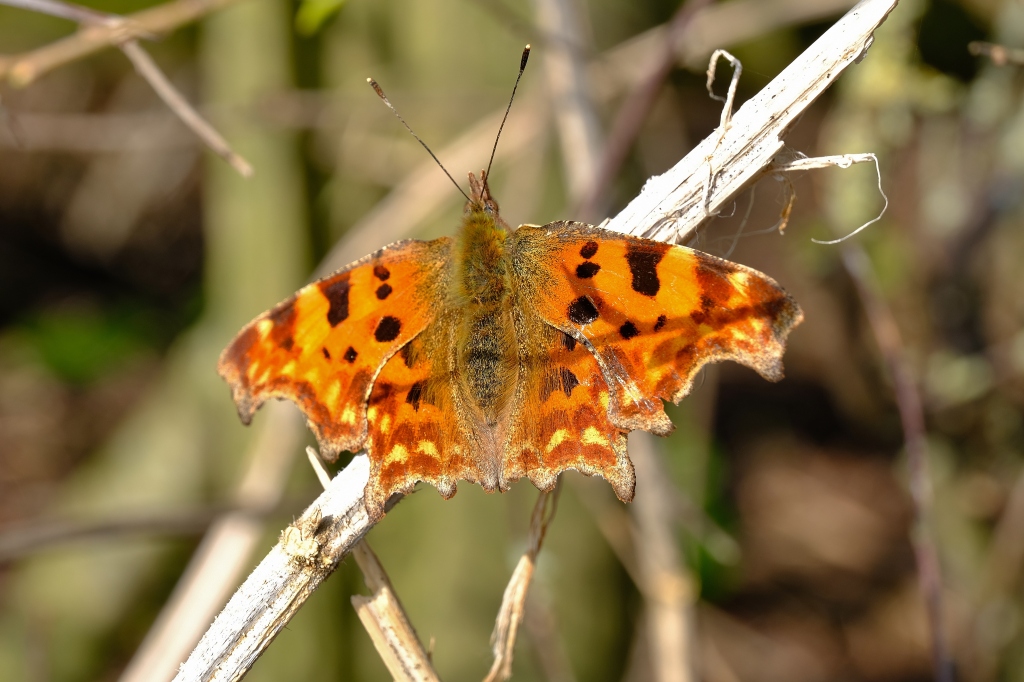
Photo credit: Sally Woodbridge
The Comma butterfly with its characteristic jagged wing edges is also coming out of hibernation. This butterfly will have come from the second brood last year and would have emerged in September / October. Eggs will be laid on the topsides of nettles, hops and elms in April/ May and July / August.
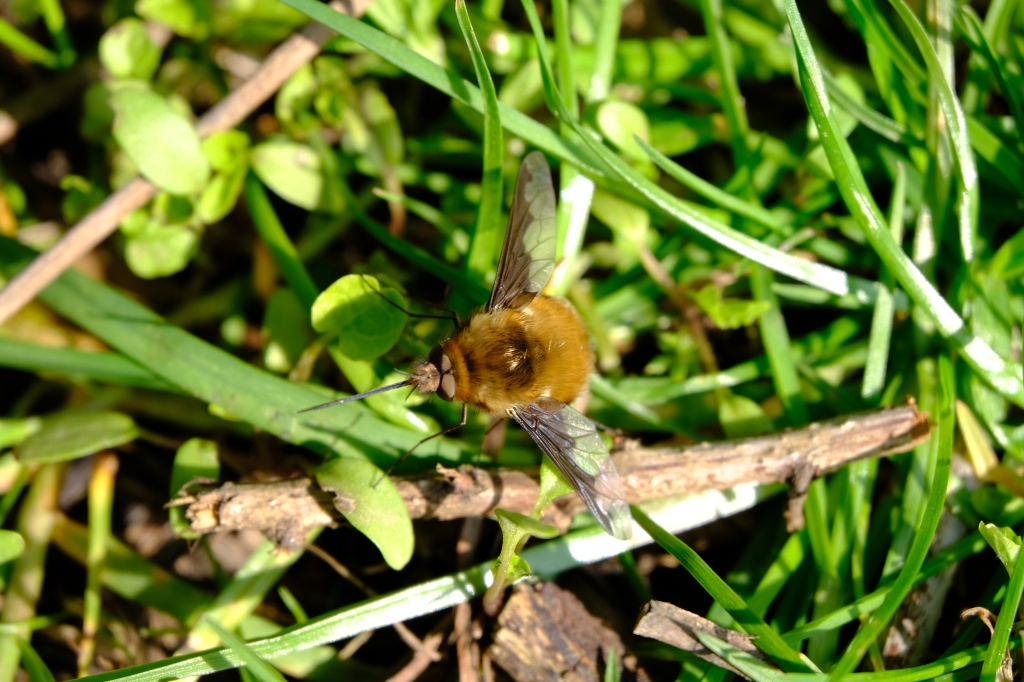
Photo credit: Sally Woodbridge
A bee or not a bee? Yes, there’s high pitched buzzing and it’s a great pollinator, but no it’s not a bee. Bee-flies don’t bite or sting, despite that scary looking spiky tongue (proboscis) but the cute fluffy adults have a dark secret. As larvae they grew up in bee or wasp nests eating their hosts’ grubs.
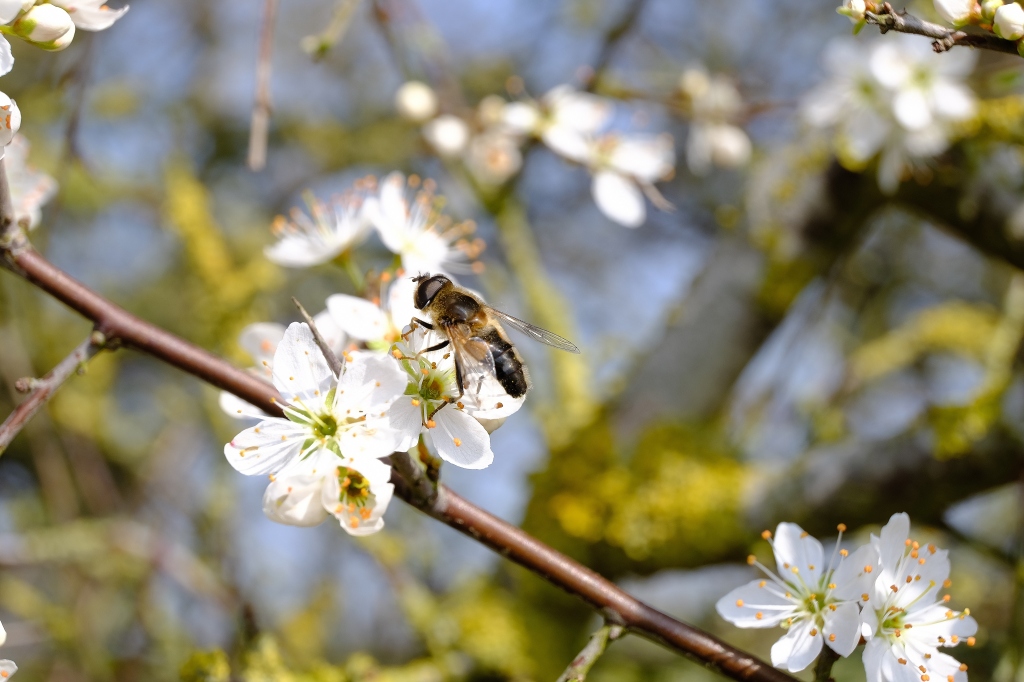
Photo credit: Sally Woodbridge
Again, not a bee. This is one of the over 280 British species of hoverfly perched on some prickly blackthorn that is in glorious bloom at the moment.
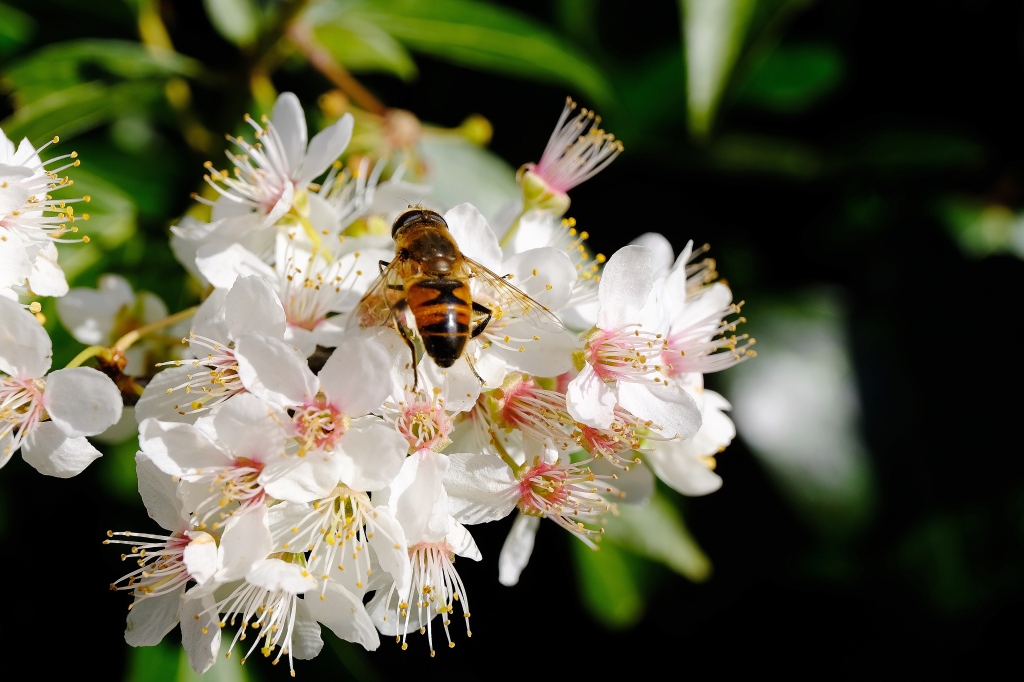
Photo credit: Sally Woodbridge
Back to where we started with the Cherry Plum, but this time with another hoverfly. Did you know that out of the top 6 pollinators in the UK 3 of them are flies? In the arctic tundra flies, not bees, do all the pollination. Time to spread our love to flies!
References
- Phillips, Roger (1978) Trees in Britain, Europe and North America, Pan Books
- Buglife, O’Toole and Shields (2007) Guide to bees of Britain, Field Studies Council fold out guide OP119
- Bebbington and Lewington (2019) Guide to the butterflies of Britain and Ireland, Field Studies Council fold out guide OP184
- Naturespot.org.uk
- Natural History Museum https://www.nhm.ac.uk/discover/bee-flies-cute-bee-mimic-with-a-dark-side.html
If you enjoyed this please enter your email address below to follow this blog and receive notifications of new posts by email.


